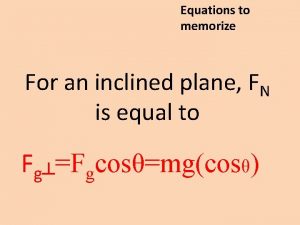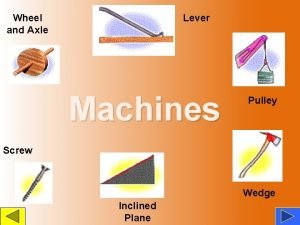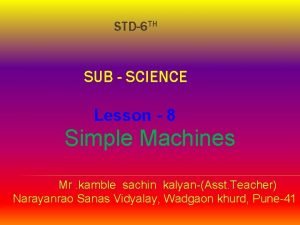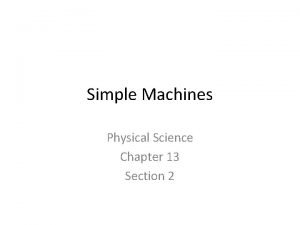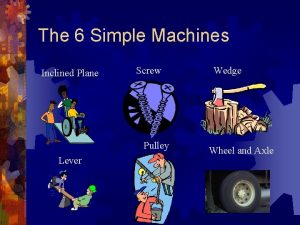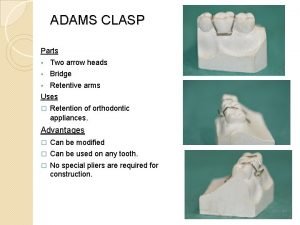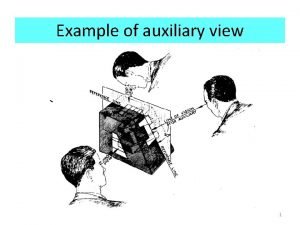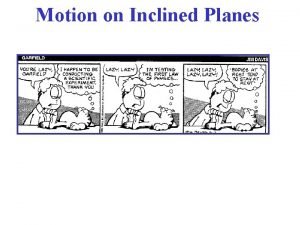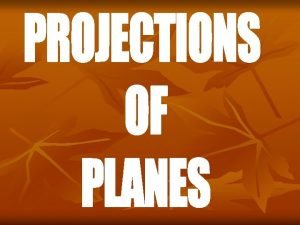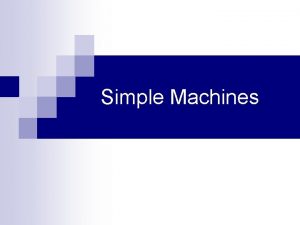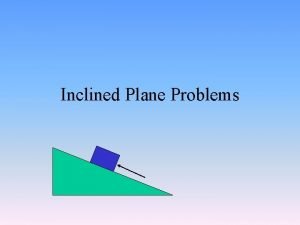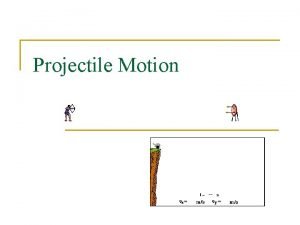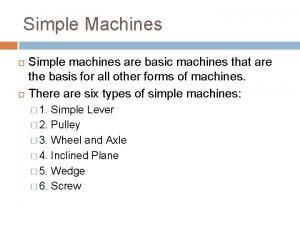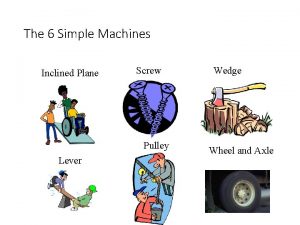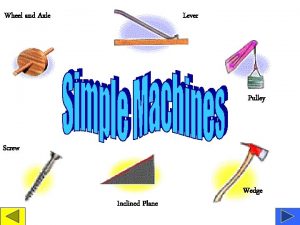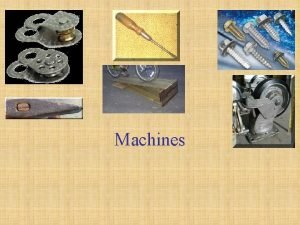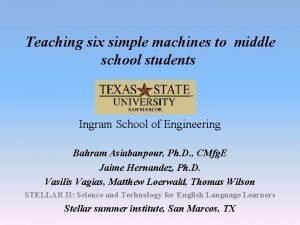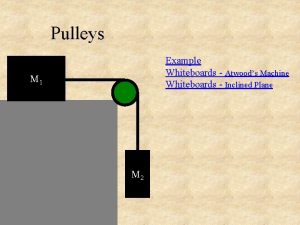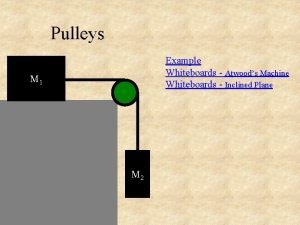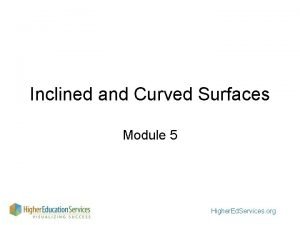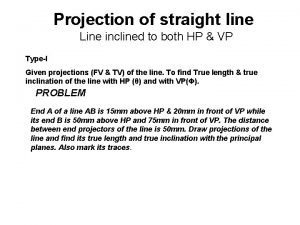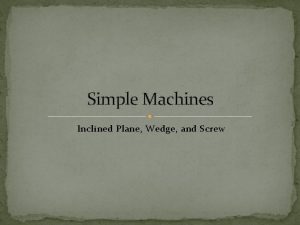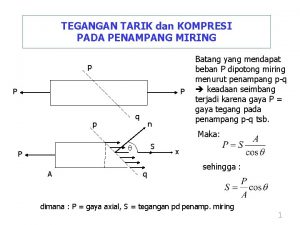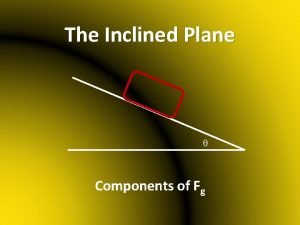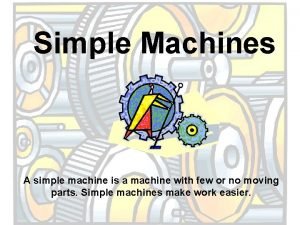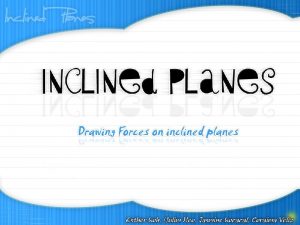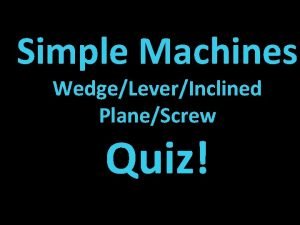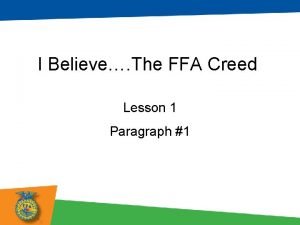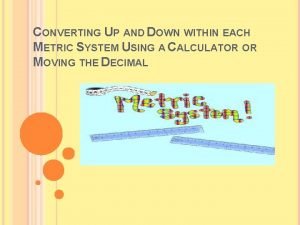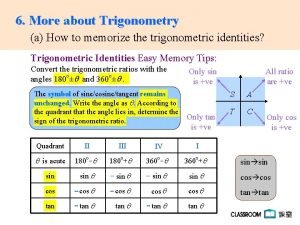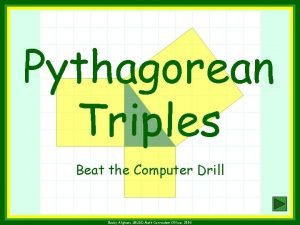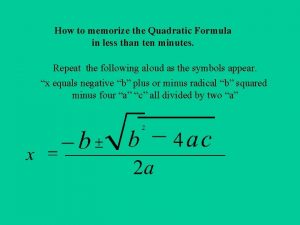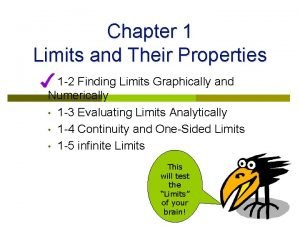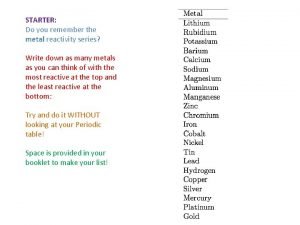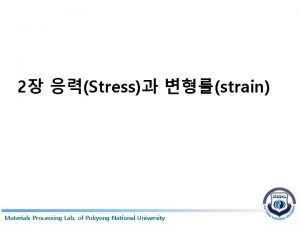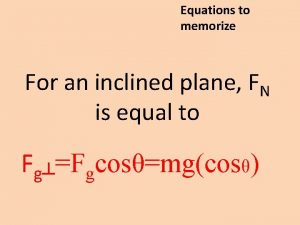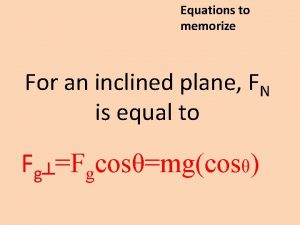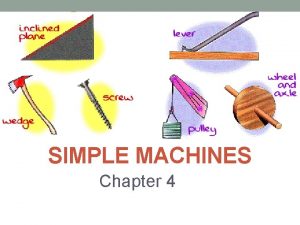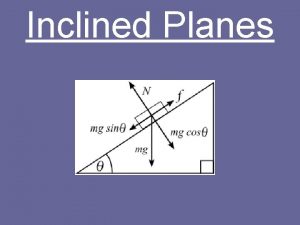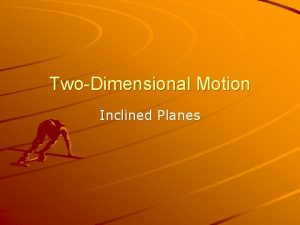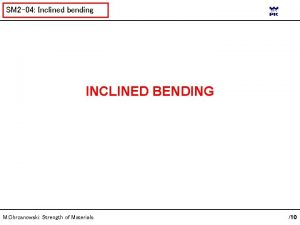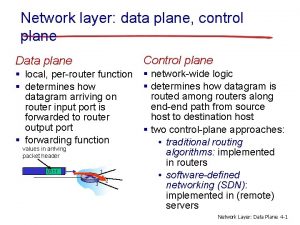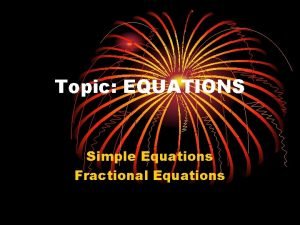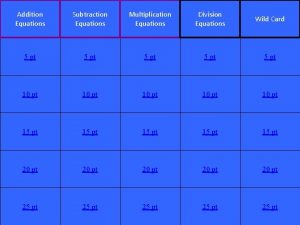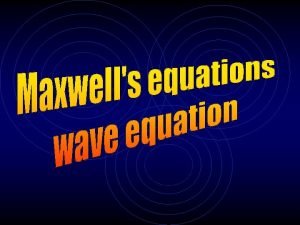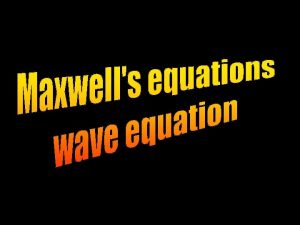Equations to memorize For an inclined plane FN























































- Slides: 55

Equations to memorize For an inclined plane, FN is equal to Fg┴=Fgcosθ=mg(cosθ)

Equations to memorize For an inclined plane, Fg. II is equal to Fg. II=Fgsinθ=mg(sinθ)

Equations to memorize For a force applied at an angle, the horizontal (or force parallel to the surface) equals FAX=FAcosθ

Equations to memorize The equation for the circumference of a circle C=2πr

Equations to memorize Equation for centripetal force (combined version not on Ref Table)

Equations to memorize Equation for change in momentum = impulse (long version of Newton’s Second Law) Fnett=mΔv

Equations to memorize Angle of a resultant given horizontal and vertical components -1 Θ=tan (A /A ) y x

Equations to memorize Equation for slope Slope = (Δy/Δx)

Equations to memorize Equation for area of a sloped (triangle) graph Area = 1/2 bh or [(x-value)(y-value)]/2

Equations to memorize Equation for area of a straight line (rectangular) graph Area = bh or (x-value)(y-value)

Equations to memorize Equation for Fs when a mass is applied vertically Fs=Fg=mg (or kx=mg)

Name the type of relationship represented by the graph Inverse or inverse square

Name the type of relationship represented by the graph Direct

Name the type of relationship represented by the graph Direct Square

Vocabulary or concept A quantity in which both direction and magnitude are important Vector

Vocabulary or Concept Another word for mass Inertia

Vocabulary or Concept Mass x velocity = Momentum or impulse

Vocabulary or Concept The area where an object feels the force of another object with the same fundamental force carrier Field

Vocabulary or Concept The word for the “size” of a measurement Magnitude

Vocabulary or Concept When trying to solve for an unknown force using a force diagram, what 2 questions must you answer? What axis (x, y, or II)? Is it at equilibrium?

Vocabulary or Concept Term for the sum of two vector quantities Resultant

Vocabulary or Concept The term for an object that is not experiencing acceleration Constant velocity or equilibrium

Vocabulary or Concept The force causing an object to move in a circular path is always directed to The center of the circle

Vocabulary or Concept As an object moves further from the center of a planet, the mass of the object Remains the same (Fg changes)

Vocabulary or Concept For an object moving in a circle, at any point the velocity is directed Tangent to the circle

Vocabulary or Concept Centripetal acceleration is directed To the center of the circle

Vocabulary or Concept To determine the force of friction on an object that is remaining at rest you must use the coefficient of ______ friction static

Vocabulary or Concept For an object in motion, the _______ coefficient of friction must be used kinetic

Vocabulary or Concept The gravitational force is always attractive

Vocabulary or Concept The normal force is the force from a surface that always points Perpendicular to the surface

Vocabulary or Concept Net Force always agrees with acceleration

Vocabulary or Concept If acceleration is constant, Fnet will be Constant (uniform)

Vocabulary or Concept During a collision the momentum of the system before the event always equals Momentum after

Vocabulary or Concept For any given change in momentum an increase in time will cause Fnet to decrease

Vocabulary or Concept The rate in change of momentum is known as

STATE VARIABLE Normal Force FN

STATE VARIABLE Net force Fnet

STATE VARIABLE Spring constant k

STATE VARIABLE Coefficient of friction µ

STATE VARIABLE mass m

STATE VARIABLE Weight Fg

STATE VARIABLE Parallel component of weight Fg. II

STATE VARIABLE Change in equilibrium length of a spring x

STATE VARIABLE Spring Force Fs

STATE VARIABLE Centripetal Force Fc

STATE VARIABLE Centripetal acceleration ac

STATE VARIABLE Distance between two objects r

STATE VARIABLE Radius of circle r

STATE VARIABLE Gravitational field strength g

STATE VARIABLE Universal Gravitational constant G

STATE VARIABLE Acceleration due to gravity m

STATE VARIABLE Frictional Force Ff

STATE VARIABLE Impulse J

STATE VARIABLE Momentum p

STATE VARIABLE time t
 Fgcosθ
Fgcosθ Software-defined networking: a comprehensive survey
Software-defined networking: a comprehensive survey Types of friction
Types of friction Curved inclined plane
Curved inclined plane Ima of screw
Ima of screw Lever wedge wheel and axle
Lever wedge wheel and axle Blank is an inclined plane wrapped in a cylindrical post
Blank is an inclined plane wrapped in a cylindrical post Compound machines
Compound machines Inclined plane simple machine
Inclined plane simple machine Pulley simple machine diagram
Pulley simple machine diagram 6 simple machines
6 simple machines Inclined plane wrapped around a post
Inclined plane wrapped around a post Function of adams clasp
Function of adams clasp Auxiliary vertical plane is
Auxiliary vertical plane is Simple machines history
Simple machines history Inclined plane practice problems
Inclined plane practice problems Pentagonal plate
Pentagonal plate Inclined bite plane
Inclined bite plane Slide to doc.com
Slide to doc.com Introduction of simple machine
Introduction of simple machine Forces acting on an object on an inclined plane
Forces acting on an object on an inclined plane Does vertical velocity change in projectile motion
Does vertical velocity change in projectile motion Claw hammer simple machine
Claw hammer simple machine Lid cover simple machine
Lid cover simple machine Inclined plane pyramids
Inclined plane pyramids Inclined plane wrapped around a post
Inclined plane wrapped around a post An inclined plane wrapped around a rod
An inclined plane wrapped around a rod Simple machines mikids
Simple machines mikids Atwood's machine & inclined plane with friction
Atwood's machine & inclined plane with friction Is a bicycle a compound machine
Is a bicycle a compound machine Atwood machine on inclined plane
Atwood machine on inclined plane Inclined surfaces in orthographic projections
Inclined surfaces in orthographic projections Projection of lines inclined to both the planes
Projection of lines inclined to both the planes Ama of a screw
Ama of a screw Slant shear test
Slant shear test Force components on inclined plane
Force components on inclined plane An inclined plane wound around a post
An inclined plane wound around a post Wagon simple machines
Wagon simple machines Which image shows an inclined plane in use?
Which image shows an inclined plane in use? Quiz 4: inclined plane, wedge, and screw
Quiz 4: inclined plane, wedge, and screw R = vo^2(sin 2θ)/g
R = vo^2(sin 2θ)/g Ffa creed video
Ffa creed video Nick the baby camel ate an inch clam for supper in phoenix
Nick the baby camel ate an inch clam for supper in phoenix The ability (or lack of) to think, learn, and memorize.
The ability (or lack of) to think, learn, and memorize. How to memorize the metric system
How to memorize the metric system Trigonometry memorization
Trigonometry memorization How can i memorize things quickly
How can i memorize things quickly Pythagorean triples to memorize
Pythagorean triples to memorize How to memorize si units
How to memorize si units How to memorize the quadratic formula
How to memorize the quadratic formula Chapter 1 limits and their properties
Chapter 1 limits and their properties Remember reactivity series
Remember reactivity series How to memorize molecular geometry
How to memorize molecular geometry Present perfect tense - past participles
Present perfect tense - past participles Plane stress plane strain
Plane stress plane strain Forwarding equivalence class (fec)
Forwarding equivalence class (fec)
